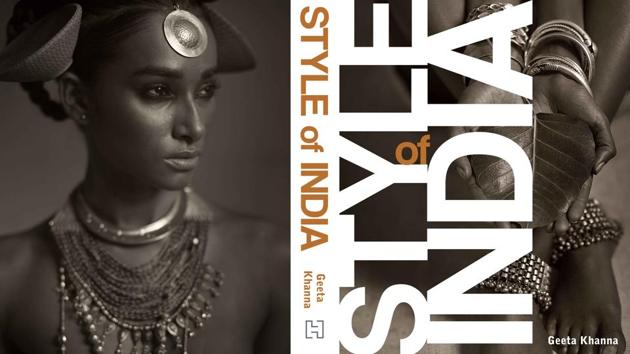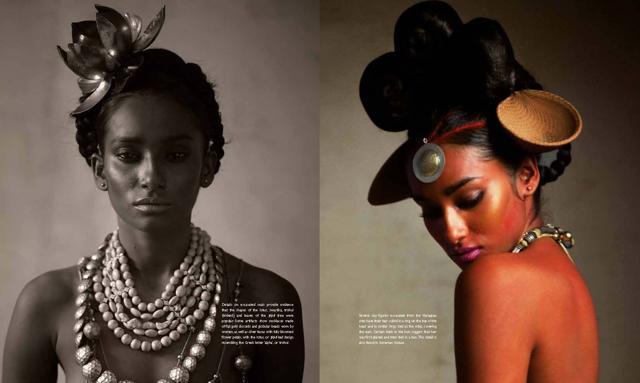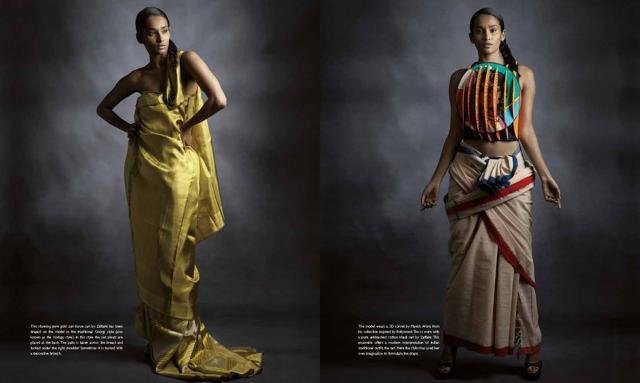Review: Style of India walks us through the dressing traditions in India from the Vedic Age till now
Ten significant moments in Style of India, from past to the future, traditional to the contemporary and costume to couture from the Vedic Age till now
The material culture of dress in India has never been addressed with such a vast sweep, in such a fresh and simplistic way, visually and textually, ranging from ancient temple sculpture to modern cinema and contemporary fashion design. Author Geeta Khanna draws inspiration from many corners of Indian civilisation like art, paintings, sculptures, fashion, royal dresses and cinema. The diversity of India as a historical subject and a vast tradition is being explored through various images, concepts, cultures and crafts. Style of India shows why Indian people dress the way they do. The journey begins from Harappa, to show the evolution of Indian style through ages, invasions and post- independence.

The ten significant moments in Style of India, from past to the future, traditional to the contemporary and costume to couture.
- The Rig Veda, the first recited Veda revealing the versatile unstitched drapes in white and gold in ancient India which would be fall under the category of unisex style today. Also, presence of cotton, silks, dyes and jewellery during 2500 BCE indicated a sense of sophistication and how trade and external invasions influenced Northern India is so many ways. Greeks brought frock-like tunics and ruched pants, Romans showed new style of draping the unstitched and the Kushans came with stitched clothing and heavy footwear. The Indian textile industry was at its peak during the Mauryan age with traces of weaving centres and peshaskari(embroidery).
- The description of costumes, ornaments, headdresses and hairstyles in Natya Shastra and how the India classical dance has been inspired by the concepts and evolved over time. Comparison of the Apasara, Devdasi and the Nautch girl in terms of evolution of their style, existence and relevance is interesting. The sheer clothing associated with the Apsara, the Devdasi’s costume mirrored the attire attributed to India goddesses and the garishly dressed street dancers, the Nautch girls decided their fate in terms of their spiritual significance.
- The divine attires of gods and goddesses and their persona have been interpreted differently in terms of regional styles, drapes and ornamentation in artworks and religious spaces. The incarnations of Vishnu and Shakti have been understood in different ways and the drapes, colours and adornments vary from culture to culture.
- Abul Fazl’s documentation of the costumes of India during the Mughal dynasty and how it was an insight into the emperor’s ideas on using clothing as a form of tool to propagate political agendas, in Akbar’s case, secularism. The choli-ghagra-odhni, the staple clothing among Hindu women became far more popular among Muslim women during the era.
-During the 19th century, Parsis brought Chinese artefacts, textiles and weaves back to India with tanchoi weave being the most popular. The Parsi Gara motifs were drawn from the vast range of traditional Chinese textile motifs. The French influence on Indian textiles has been consistent yet subtle. They were primary consumers of the chintz prints popularised the textile and trade relations between two cultures and the print saw a revival post 1970. Footwears had a great deal of attention during the British Raj as well as headgears, the markers of one’s social and cultural standing. Men continue to wear safari suits, blazers and neckties and women can’t give up on pants, shirts, brooches and breeches post independence.

- The royal ways of dressing saw the incorporation of fabrics, jewel tones and surface ornamentation. Chanderis, Banarasis, metallic zari-patti work reflected in royal dressing time and again.
-The women style icons like Anasuya Sarabhai often dressed in a sari but instead of a blouse, wore a shirt and a necktie. Maharani Indira Devi of Cooch Behar was bold and beautiful and was believed to have said on discovering French chiffon that if the French could wear it as an undergarment, she too could wear it as a sari. Vijay Lakshmi Pandit style showed in her love for mandarin collars and brooch. Maharani Gayatri Devi’s classic beauty was complimented by her short hair, delicate saris and her love for shoes.
- Self sustainability, India’s core principle to attain freedom survived in Khadi fabric as a philosophy, in the form of a garment. 80s and 90s saw India designers experiment with the fabric and rest in history. The revival of Indian textiles found space as a cause in the hands of personalities like Sally Holkar, Martand Singh, Pupul Jayakar and Laila Tyabji. The Sari, a parallel fashion movement that never lost its fervour, became the ultimate style statement from an everyday outfit for women and also became one of the most desirable garments across the world. From Banaras’s Kin Khwab to UP’s Jamdani, from Baluchar weaves of Bengal to Himroo brocade fabric of Maharashtra, the world wants the Sari in everything and how along with the many ways of draping the dreamy garment.
- India has been a muse to iconic design houses across the world. Brands like Hermès’s interpretation of Indian colours in the Fantasies Indiennes scarf, Chanel’s incorporation of the glamorous Indian fabrics and gemstones with the brand’s iconic pearls and monochrome, Jean Paul Gaultier’s Maharaja Collection inspired by the Maharajas of the colonial period showcased with Gaultier’s signature androgynous patterns shows how the West adored India.
- The Indian fashion designers and their journey is as fascinating as their amalgamation of traditional roots into a modern narrative. Among the many big names, Style of India looks into the life and time of Asha Sarabhai, Satya Paul, Umang Hutheesing and the late Rohit Khosla and their role in carving the road map for one of the most talked about fashion movements in the world, not to mention the multi-million dollar industry around it.

More highlights
-The Harappa Goddess shoot that is recreated to see how the dress was during that time.
- Comparison of apasara, devdasi and Nautch girl- evolution of their style
- Calendar art that shows how the same god looks different in different states of India
- Lithograph of Chandni Chowk- the most amazing retail outfit of its time on earth.
-The princely state Style of India and LVMH
- The influence of the British Style on the Indian ladies delegates of the congress- pre independence.
- International designers work inspired by the maharajas of India- includes the work of Mr Karl Lagerfeld, Jean Paul Gaultier.
- Narration art in Fashion by Manish Arora- his presentation of the line inspired by Amar Chitra Katha
-The Sari drape shoot
- Amrapali costume by Bhanu Athaiya
- Muzaffar Ali’s work sheets on creation of the costumes inspired by Awadh for Umrao Jaan.
Follow more stories on Facebook and Twitter






